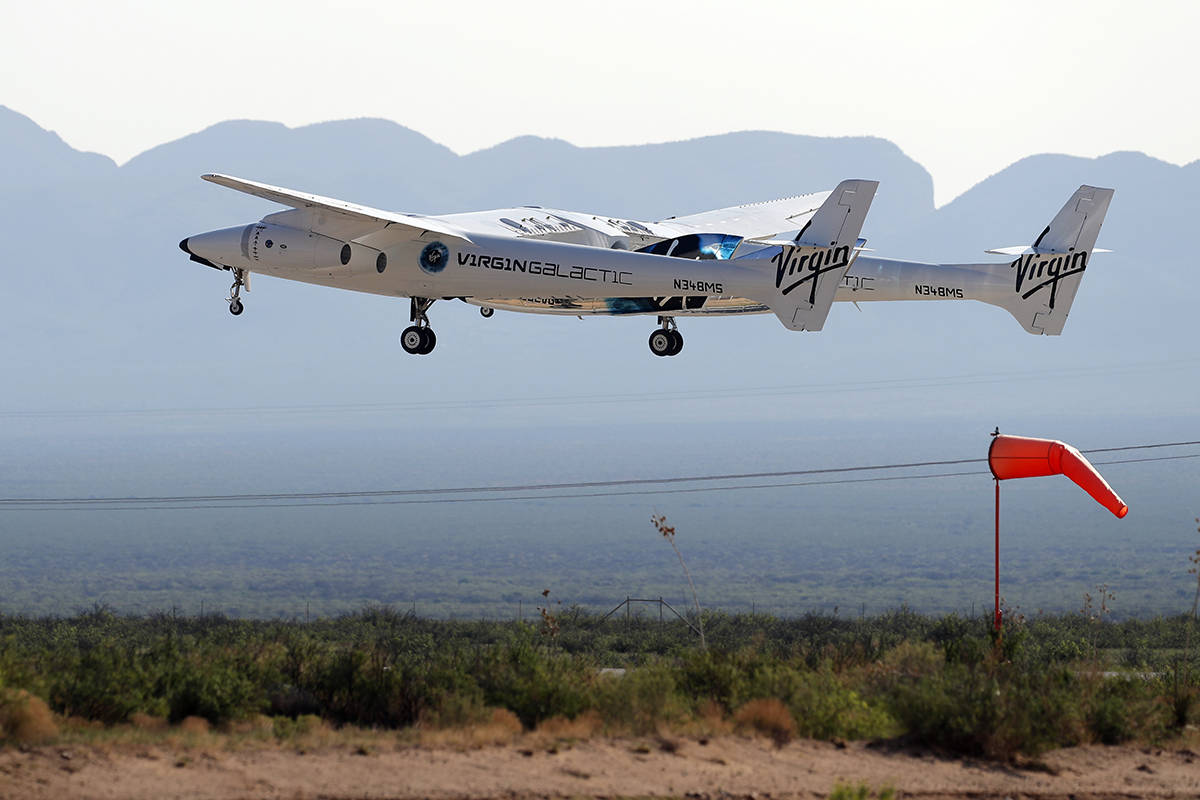Richard Branson, 71, reaches space in his own ship

TRUTH OR CONSEQUENCES, N.M. — Swashbuckling entrepreneur Richard Branson hurtled into space aboard his own winged rocket ship Sunday in his boldest adventure yet, beating out fellow billionaire Jeff Bezos.
The nearly 71-year-old Branson and five crewmates from his Virgin Galactic space tourism company reached an altitude of about 53 miles (88 kilometers) over the New Mexico desert — enough to experience three to four minutes of weightlessness and see the curvature of the Earth — and then safely glided back home to a runway landing.
“Seventeen years of hard work to get us this far,” a jubilant Branson said as he congratulated his team on the trip back.
Branson became the first person to blast off in his own spaceship, beating Bezos by nine days. He also became only the second septuagenarian to depart for space. (John Glenn flew on the shuttle at age 77 in 1998.)
With about 500 people watching, including Branson’s wife, children and grandchildren, a twin-fuselage aircraft with his space plane attached underneath took off in the first stage of the flight.
The space plane then detached from the mother ship at an altitude of about 8½ miles (13 kilometers) and fired its engine, reaching the edge of space. The entire flight up and back aboard the sleek white ship, named Unity, took just under 15 minutes.
Virgin Galactic conducted three previous test flights into space with crews of just two or three.
Billionaire space race
The flamboyant, London-born founder of Virgin Atlantic Airways wasn’t supposed to fly until later this summer. But he assigned himself to an earlier flight after Bezos announced plans to ride his own rocket into space from Texas on July 20, the 52nd anniversary of the Apollo 11 moon landing.
Branson, who has kite-surfed the English Channel and attempted to circle the world in a hot-air balloon, denied he was trying to beat Bezos.
Another one of Branson’s chief rivals in the space-tourism race among the world’s richest men, SpaceX’s Elon Musk, arrived in New Mexico to witness the flight, wishing Branson via Twitter, “Godspeed!”
Bezos likewise sent his wishes for a safe and successful flight, though he also took to Twitter to enumerate the ways in which be believes his company’s rides will be better.
Bezos’ Blue Origin company intends to send tourists past the so-called Karman line 62 miles (100 kilometers) above Earth, which is is recognized by international aviation and aerospace federations as the threshold of space.
But NASA, the Air Force, the Federal Aviation Administration and some astrophysicists consider the boundary between the atmosphere and space to begin 50 miles (80 kilometers) up.
The risks to Branson and his crew were underscored in 2007, when a rocket motor test in California’s Mojave Desert left three workers dead, and in 2014, when a Virgin Galactic rocket plane broke apart during a test flight, killing one pilot and seriously injuring the other.
Showmanship
Ever the showman, Branson insisted on a global livestream of the Sunday morning flight and invited celebrities and former space station astronauts to the company’s Spaceport America base in New Mexico.
R&B singer Khalid was on hand to perform his new single “New Normal” — a nod to the dawning of space tourism — while CBS “Late Show” host Stephen Colbert served as the event’s master of ceremonies.
Virgin Galactic already has more than 600 reservations from would-be space tourists, with tickets initially costing $250,000 apiece. Blue Origin is waiting for Bezos’ flight before announcing its ticket prices.
Musk’s SpaceX, which is already launching astronauts to the International Space Station for NASA and is building moon and Mars ships, is also competing for space tourism dollars. But its capsules will do more than make brief, up-and-down forays; they will go into orbit around the Earth, with seats costing well into the millions. Its first private flight is set for September.
Musk himself has not committed to going into space anytime soon.
“It’s a whole new horizon out there, new opportunities, new destinations,” said former NASA astronaut Chris Ferguson, who commanded the last shuttle flight 10 years ago. He now works for Boeing, which is test-flying its own space capsule.
“This is really sort of like the advent of commercial air travel, only 100 years later,” Ferguson added. “There’s a lot waiting in the wings.”
The Associated Press Health and Science Department receives support from the Howard Hughes Medical Institute’s Department of Science Education. The AP is solely responsible for all content.